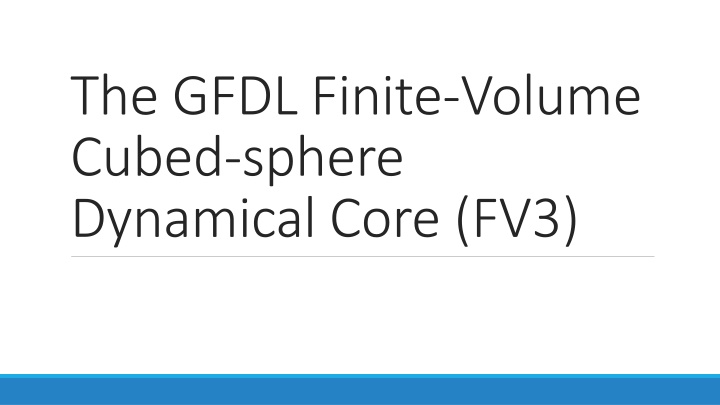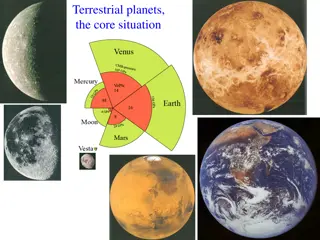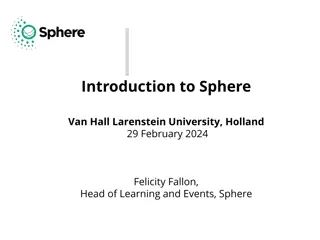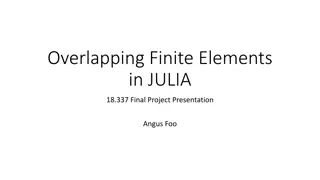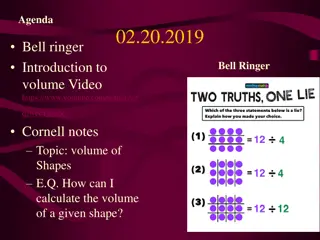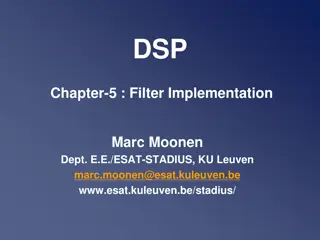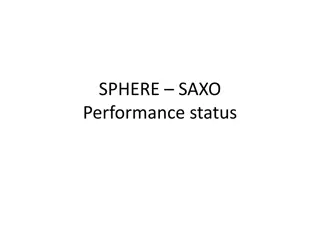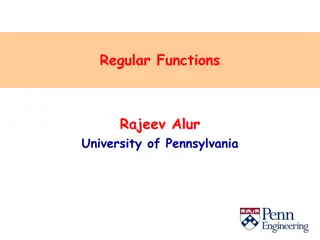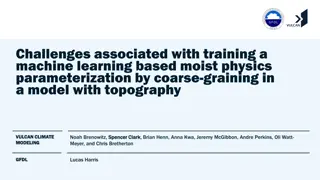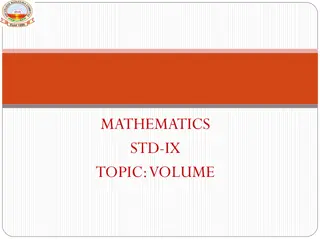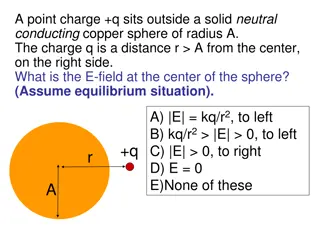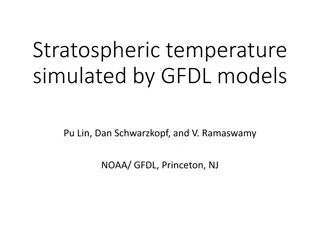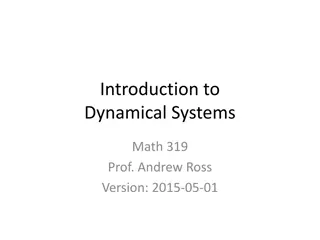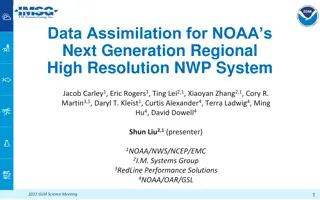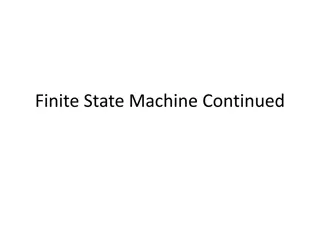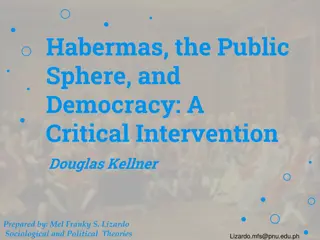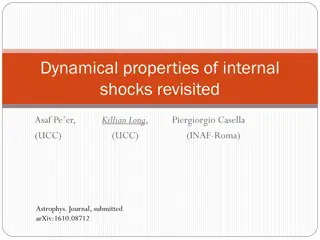GFDL Finite Volume Cubed-sphere Dynamical Core (FV3)
Finite-volume approach resulting in the GFDL Finite Volume Cubed-sphere Dynamical Core (FV3) with features like grid stretching, horizontal discretization, and Lagrangian vertical coordinate for hydrostatic atmosphere equations on a sphere.
Download Presentation

Please find below an Image/Link to download the presentation.
The content on the website is provided AS IS for your information and personal use only. It may not be sold, licensed, or shared on other websites without obtaining consent from the author.If you encounter any issues during the download, it is possible that the publisher has removed the file from their server.
You are allowed to download the files provided on this website for personal or commercial use, subject to the condition that they are used lawfully. All files are the property of their respective owners.
The content on the website is provided AS IS for your information and personal use only. It may not be sold, licensed, or shared on other websites without obtaining consent from the author.
E N D
Presentation Transcript
The GFDL Finite-Volume Cubed-sphere Dynamical Core (FV3)
Documentation Lin and Rood (1996, MWR): Flux-form advection scheme Lin and Rood (1997, QJ): FV solver Lin (1997, QJ): FV Pressure Gradient Force Lin (2004, MWR): Vertically-Lagrangian discretization Putman and Lin (2007, JCP): Cubed-sphere solver Lin (in prep), Chen et al (2013, MWR): Nonhydrostatic dynamics Harris and Lin (2013) and Harris, Lin, and Tu (2016): Grid refinement
What is FV3? Great question, I m not really sure either. Finite-volume basically keep equations continuous and un-approximated as much as possible like the finite-volume parcel the primitive equations start with Resolution/grid spacing? Very variable. Physics? Whatever you want. Lagrangian vertical coordinate Governing Eq. details? Uhhh Hydrostatic? Non-hydrostatic? Run-time switch? Vector invariant?
Horizontal grid Both grid stretching Smooth deformation, requires no changes to the solver No abrupt discontinuity Capable of 80x refinement A good scale-aware scheme can help here.) and/or two way nesting Different grids permit different parameterizations and timesteps; doesn t need a compromise for high-resolution region
Horizontal Discretization 4thorder accurate Shallow-water solver - D-grid, with C-grid winds which are interpolated from D- grid winds to compute fluxes. For the nonlinear vorticity flux term in the momentum equation, using D- grid allows exact computation of absolute vorticity with no averaging.
Lagrangian vertical coordinate Use the usual terrain-following Eulerian coordinate as the starting point Start the time integration from the chosen terrain-following Eulerian coordinate (e.g., pure s or hybrid s-p), treating all initial coordinate surfaces as material surfaces The finite volumes bounded by two coordinate surfaces (the Lagrangian control volumes) are free vertically, to float, compress, or expand with the flow as dictated by the hydrostatic dynamics. By choosing an imaginary conservative tracer (general vertical coordinate) that is a monotonic function of height and constant on the initial coordinate surfaces, the 3D equations written for the general vertical coordinate can be reduced to 2D forms.
Governing equations for the hydrostatic atmosphere on the sphere with a general vertical coordinate
Coriolis Advection (horizontal) PGF Advection (vertical) is divergence damping coefficient Last term goes away if zeta is conserved (like on a lagrangian vertical coordinate system!)
The fully compressible 2D (x, z) Euler conservation equations in flux form with a vertical Lagrangian coordinate ? ?? denotes the difference of the value of any parameter between two Lagrangian layer interfaces. Geopotential advection Non-hydrostatic pressure
Notes on nonhydrostatic solvers FV3 contains two non-hydrostatic solvers for vertical velocity and pressure perturbation. The first, a Riemann solver, was developed at GFDL during 2003-2006 based on a conservative Riemann invariants approach. This algorithm is particularly suitable for ultra-high resolution cloud-resolving simulations, with grid-cell widths of 1 km or less. A variation of this approach, within a simplified 2D vertically-Lagrangian framework, has been published by Chen et al. (2013). The second non-hydrostatic solver, developed recently for lower horizontal resolutions, is a more traditional semi-implicit time integration scheme for vertically propagating sound waves. This solver is more suitable and more efficient for lower horizontal resolution simulations, in which the extra damping provided by the semi-implicit time-integration scheme can act to filter out the poorly resolved sound waves, and therefore provides a less-noisy simulation. Both solvers use the same governing equations. All FV3 simulations for NGGPS use the semi-implicit solver.
